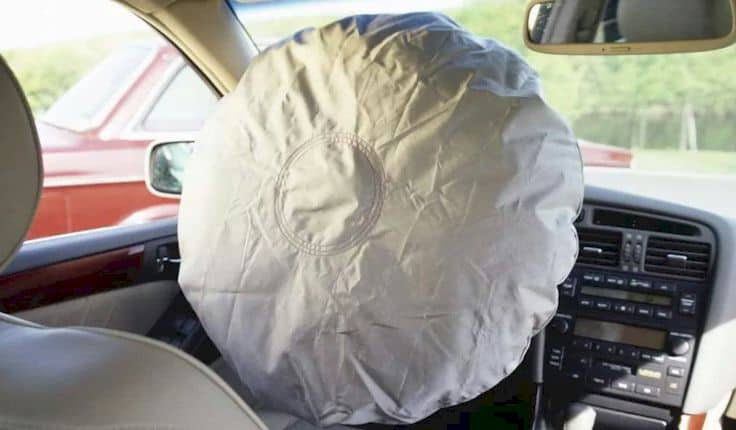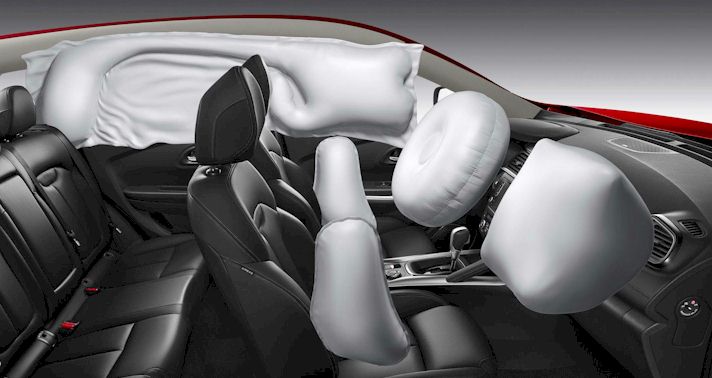Airbags have been a standard feature in automobiles for years, but many don’t give much thought about them. Do you know the history of airbags? What airbags are made of? Or that different types of airbags serve different purposes?
Yes, although you don’t see them - and hope that you never will - airbags have a big role in mitigating injury, and even fatal, in case of a car crash.
The History of Airbags

There are two known patent applications for airbags dating back to the early 1950s, both of which are based on compressed air. However, research during the 1960s showed that this type of air system didn’t inflate airbags fast enough, making them ineffective.
Ford Motors was the first to introduce a fleet of cars fitted with airbags. It was followed by General Motors in 1973, providing options for driver and passenger airbags. But four years later, they discontinued the option due to lack of consumer interest.
In the late 1980s, several car makers started offering airbag systems as standard equipment. The airbag found its way into mainstream cars in the years that followed. Since 1998, American car makers have been required to install airbags in all new passenger vehicles.
What are airbags made of?

The airbag is part of a system known as inflatable restraint system or air cushion restraint system (ACRS). Because airbags are intended to add to the protection provided by
Crash sensors are placed all over the vehicle. This device determines the force of a collision and decides whether to inflate the airbag or not. The airbag control unit monitors the sensors, and tells the airbag modules if they need to be deployed. (There is a body control module (BCM), Read this)
The airbag module consists of the bag itself and an
You might have noticed some powdery substance discharged upon airbag inflation. That substance is regular talcum or cornstarch powder. They keep airbags lubricated and elastic while in storage. you shall know how to turn off airbag light after accident.
What are the different types of airbags?
There are four main types of airbags: frontal, side, knee, and rear curtain. With continued research regarding safety, new types of airbags have been introduced recently, such as inflatable safety belts and pedestrian airbags.
Front airbag

Front airbags are designed to protect the driver and front-seat passenger. The driver’s airbag is installed in the steering wheel while the airbag for the passenger is mounted in the dashboard.
The airbags are deployed during moderate to severe head-on crashes. When inflated, they keep a person’s chest and head from coming into contact with hard surfaces in the vehicle.
For front airbags to provide maximum protection, the driver and passenger should be sitting properly and wearing seat belts. Modern airbags have a built-in sensor that detects whether occupants are wearing seat belts or not. Many newer vehicles also have a front-seat weight sensor that prevents the airbag from deploying if the person sitting there is young or small.
Side airbag

This type of airbag is beneficial in the event of side impact. They primarily protect those who are sitting on the crashed side. Side airbags have a few variants:
- Side torso bags are normally mounted in the seat. Their main purpose is to protect the person from smashing his body on the door, and reduce injuries in the abdomen and pelvic areas.
- Side curtain airbags are installed behind the roof trim directly above the doors. They’re designed to lessen the risk of head injuries. When side curtain airbags inflate, they normally cover the front and rear windows to protect passengers in both seats. Some more advanced curtain airbags have sensors that can detect if a vehicle starts to roll following a collision.
- Head side airbags protect a person’s head from hitting the object which the car has collided with, such as a pole, tree, or another vehicle
Knee airbag
In high-speed crashes, people in the vehicle are likely to sustain knee injuries. Studies have shown that a person’s kneecaps can shatter during impact.
Knee airbags distribute the force of impact to prevent not only knee injuries but also breaking a leg bone or bruising. They also help keep people in their position during a head-on collision, which reduces the force on a person’s chest and abdomen.

Rear airbags
During rear-end collisions, rear airbags protect passengers in the backseat. The rear-window airbag prevents them from crashing into the back window while the rear-center airbag keeps passengers from bumping into one another
Seatbelt airbags
The purpose of this type of airbag is to spread the force of impact over a larger part of the person’s body, and reduce the risk of injuries due to
Pedestrian airbags
Introduced in 2012 by Volvo, this exterior airbag inflates if the driver hits someone. Pedestrian airbags are supposed to reduce the number and severity of injuries that a pedestrian may suffer from.
Airbags come in various shapes and sizes, but their core purpose is the same – to keep you from experiencing severe injuries during a vehicular accident. Although it’s best if you will never have to use them, the different types of airbags are there to protect you if ever you need them.
References:
https://www.nhtsa.gov/equipment/air-bags
https://www.safemotorist.com/Articles/Airbags.aspx
https://www.scientificamerican.com/article/how-do-air-bags-work/
http://www.madehow.com/Volume-1/Air-Bag.html
https://auto.howstuffworks.com/car-driving-safety/safety-regulatory-devices/airbag1.htmJames is a certified auto technician specializing in commercial vehicles. With 30 years of experience under his belt, James has encountered almost every type of automotive issue there is! Besides his day job at the repair shop, he is also an amateur race car driver.
